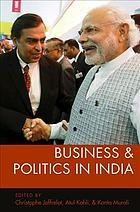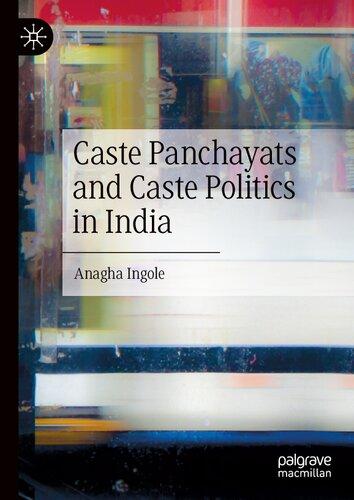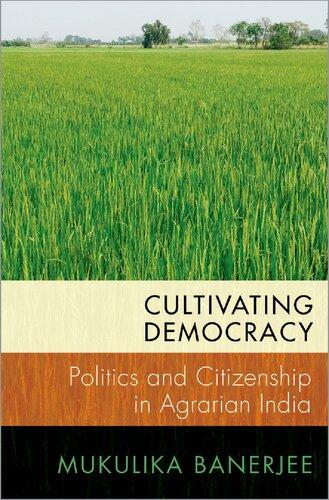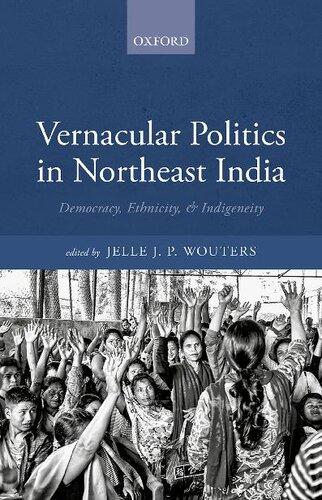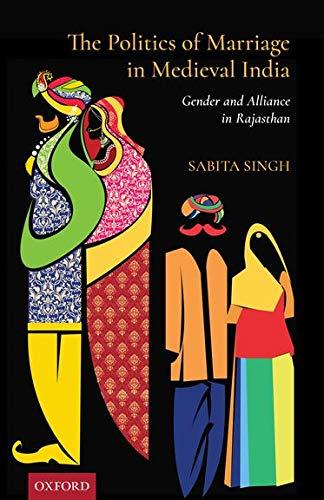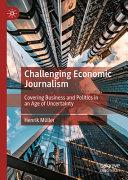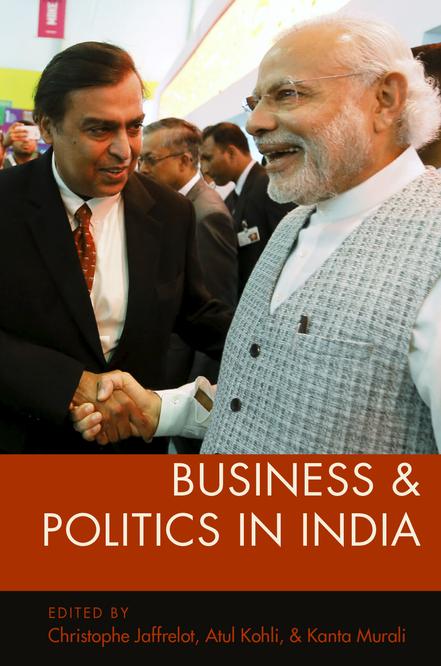1
Oxford University Press is a department of the University of Oxford. It furthers the University’s objective of excellence in research, scholarship, and education by publishing worldwide. Oxford is a registered trade mark of Oxford University Press in the UK and certain other countries.
Published in the United States of America by Oxford University Press 198 Madison Avenue, New York, NY 10016, United States of America.
© Oxford University Press 2019
All rights reserved. No part of this publication may be reproduced, stored in a retrieval system, or transmitted, in any form or by any means, without the prior permission in writing of Oxford University Press, or as expressly permitted by law, by license, or under terms agreed with the appropriate reproduction rights organization. Inquiries concerning reproduction outside the scope of the above should be sent to the Rights Department, Oxford University Press, at the address above.
You must not circulate this work in any other form and you must impose this same condition on any acquirer.
Library of Congress Cataloging-in-Publication
Data Names: Jaffrelot, Christophe, editor. | Kohli, Atul, editor. | Murali, Kanta, editor. Title: Business and politics in India / edited by Christophe Jaffrelot, Atul Kohli and Kanta Murali.
Description: New York : Oxford University Press, [2019]
Identifiers: LCCN 2018017070 | ISBN 9780190912468 (hardcover) | ISBN 9780190912475 (paperback) | ISBN 9780190912482 (updf) | ISBN 9780190912499 (epub) Subjects: LCSH: Industrial policy—India. | Business and politics—India. Classification: LCC HD3616.I43 B87 2019 | DDC 338.954—dc23 LC record available at https://lccn.loc.gov/2018017070
1 3 5 7 9 8 6 4 2
Paperback printed by WebCom, Inc., Canada Hardback printed by Bridgeport National Bindery, Inc., United States of America
CONTENTS
Acknowledgments vii
List of Contributors ix
1. Introduction 1
Christophe Jaffrelot, Atul Kohli, and Kanta Murali
PART I: THE POWER OF BUSINESS IN CONTEMPORARY INDIA
2. Economic Liberalization and the Structural Power of Business 25
Kanta Murali
3. India’s Porous State: Blurred Boundaries and the Evolving Business- State Relationship 50
Aseema Sinha
PART II: BUSINESS POWER ACROSS ISSUE AREAS
4. The Politics of India’s Reformed Labor Model 95
Rina Agarwala
5. Business Interests, the State, and the Politics of Land Policy 124
Rob Jenkins
6. Cabal City: Urban Regimes and Accumulation without Development 151
Patrick Heller, Partha Mukhopadhyay, and Michael Walton
7. Media in Contemporary India: Journalism Transformed into a Commodity 183
C. Rammanohar Reddy
PART III: REGIONAL EXPERIENCES
8. Business-Friendly Gujarat Under Narendra Modi: The Implications of a New Political Economy 211
Christophe Jaffrelot
9. Business and Politics: The Tamil Nadu Puzzle 234
John Harriss and Andrew Wyatt
10. Business and State in Odisha’s Extractive Economy 260
Sunila S. Kale
11. Conclusion 282
Christophe Jaffrelot, Atul Kohli, and Kanta Murali
Index 319
ACKNOWLEDGMENTS
This project was conceived over a lunch conversation between Atul Kohli and Christophe Jaffrelot on the Princeton campus. Atul then applied for a grant to the Princeton Institute for International and Regional Studies (PIIRS). This facilitated the conference that led to this volume. Thanks are thus due to the director of PIIRS at that time, Mark Beissinger, for funding this project. Christophe and Atul then invited Kanta Murali to join as the third editor. All three chose the paper writers. In addition to the paper writers, five other scholars joined the small conference at Princeton: Amrita Basu, Kanchan Chandra, Devesh Kapur, Sanjay Ruparelia, and Vinay Sitapati. We would like to thank them for their helpful comments on the early drafts of the papers that appear in this volume. When Atul presented an outline of the project at the meetings of the American Political Science Association in 2016, Ashutosh Varshney was kind enough to invite us to submit the volume for consideration in the book series he edits for Oxford University Press. We thank Ashutosh Varshney for this opportunity. Two anonymous reviewers also need to be acknowledged for their useful suggestions for revisions.
CONTRIBUTORS
Rina Agarwala is Associate Professor in the Department of Sociology at Johns Hopkins University.
John Harriss is Professor in the School for International Studies at Simon Fraser University.
Patrick Heller is the Lyn Crost Professor of Social Sciences and Professor of Sociology and International Studies at Brown University.
Christophe Jaffrelot is Senior Research Fellow at CERI- Sciences Po/CNRS.
Rob Jenkins is Professor of Political Science at Hunter College and the Graduate Center at City University of New York.
Sunila S. Kale is Associate Professor, Henry M. Jackson School of International Studies at the University of Washington.
Atul Kohli is the David Bruce Professor of International Affairs at Princeton University.
Partha Mukhopadhyay is Senior Fellow at the Centre for Policy Research.
Kanta Murali is Assistant Professor in the Department of Political Science at the University of Toronto.
C. Rammanohar Reddy is Readers’ Editor at Scroll.in.
x Contributors
Aseema Sinha is the Wagener Chair of South Asian Politics and George R. Roberts Fellow in the Department of Government at Claremont McKenna College.
Michael Walton is Senior Lecturer in Public Policy at Harvard Kennedy School.
Andrew Wyatt is Senior Lecturer in the School of Sociology, Politics and International Studies at the University of Bristol.
Business and Politics in India
1 Introduction
Christophe Jaffrelot, Atul Kohli, and Kanta Murali
Over the last few decades politics in India has moved steadily in a probusiness direction. The earlier state commitment to socialism and redistribution has been replaced by the goal of growth promotion via support for private enterprise. Unlike in many other developing or communist countries, this important shift in India has been incremental; it has come about within the frame of democracy and without any dramatic regime change. It has also led to a political strengthening within India of indigenous—instead of foreign—capital. The probusiness shift in India has important implications for both how the world’s largest democracy is governed and for the life-chances of the citizens of that democracy. In this volume we seek to analyze the growing power of business groups in the Indian polity.
A study of the role of business in Indian politics is of both normative and scholarly significance. As India’s economy modernizes rapidly, with the private sector in the lead, some shift in political power toward business groups is to be expected; to an extent, this change is par for the course. Moreover, business groups in any capitalist economy are central economic actors and legitimate participants in the political process. However, the legitimacy of a democracy rests on a variety of citizens and groups having access to power; veto power held by any narrow group threatens to transform a democracy into an oligarchy. The struggle between the power of wealth and the power of numbers is a perennial one in all capitalist democracies. What is important for democracy to flourish is that this struggle is not won once for all by either side.
The moral argument that might support growing concentration of wealth and power would be that such an arrangement helps create greater wealth that will eventually reach the poor. What this standpoint ignores, however, is an omnipresent political question: once the rich come to control the state, and state power becomes more and more privatized, what political pressures will push the state to undertake tasks that serve the broader good? With an enormous number
of poor in India, the Indian state faces giant public responsibilities. Beyond poverty alleviation, these responsibilities include provision of education, health, and infrastructure among others. The more the state caters to narrow, private interests, the greater the danger that the public functions of the state will become a distant second concern. Of course, the “socialist” Indian state of the past hardly proved itself a successful agent of inclusive development; it would thus be unfair to attribute the present failures of the Indian state to the growing power of business. Nevertheless, it is the case that, with growing wealth and public revenues, it becomes possible to imagine effective state intervention, aimed at promoting the public good. It need not be added, but we will, that the Indian state at present is hardly effective enough to initiate such public actions; for a journey in that direction to even begin, what will be needed in the future are political leaders who prioritize broader goals over narrow collaboration with the economic elite.
The Scholarly Context
A long tradition of scholarship has probed the power of business in democracies, especially advanced industrial democracies. This scholarship is concerned both with assessing the extent of business power and with how business groups exercise power. As to the first issue, important liberal scholars have suggested that business groups in democracies often exercise more power than other interest groups. Business groups are thus first among equals, who can come to exercise disproportionate control—or “veto power”—that in turn may endanger the health of democracies (e.g., Dahl 1975; Lindblom 1977; Gilens and Page 2014). Some Marxist scholars describe such disproportionate power of business groups in capitalist democracies as hegemonic power. The concept of hegemony suggests that not only do business groups exercise overwhelming power, but they also help create a cultural context in which such control seems natural and inevitable (e.g., Gramsci 1971).
Beyond assessing the extent of business power, both liberal and Marxist scholars have debated whether capitalists influence the functioning of democracies by direct participation in politics, or if the system of capitalism itself constraints capitalist states. The former can be described as instrumental or direct power, while scholars often label the latter mode of exercising power as structural or indirect power.1 Examples of instrumental power include: when businessmen finance elections to seek favorable policies, lobby governments to tilt decisions in their own favor, or even come to occupy positions of power directly. Structural power, by contrast, operates via the principle that the powerful in society get what they want whether they actively seek it or not.2 Because businessmen control key economic levers in any capitalist society, politicians
must take into account the preference of business groups, both to maintain the health of the economy and to secure their own political futures. Since investors can readily move their investments to more favorable locations, the threat of capital flight is often enough to pressure leaders to pursue probusiness policies. Though scholars may disagree as to which is more prevalent and important— instrumental or structural power—most scholars are likely to agree that the power of business operates via both pathways. We will discuss these general considerations again in subsequent chapters of this volume.
Beyond advanced industrial democracies, scholars have also begun to analyze the role of business in the politics of developing countries (e.g., Handley 2008; Hundt 2009; Schneider 2004; Winters 2011). India is a prime developing country for such studies because of its robust democracy and because of the shift to probusiness economic policies since the 1980s. It is not surprising, then, that scholars of politics and society in India have disagreed in their assessment of the relative power of business groups within the Indian state, as well as on how this power is exercised. While some scholars have suggested that Indian capitalists exercised disproportionate power in the making of modern India (e.g., Chibber 2003), most have suggested that business groups in “socialist” India—say, prior to the 1980s—competed for influence with other powerful groups, such as landed classes and the state elite (e.g., Bardhan 1984; Raj 1973; Kochanek 1974; Rudolph and Rudolph 1987). Since economic liberalization, however, there is a growing sense among scholars that the power of business groups in India has expanded, maybe even dramatically (e.g., Kohli 2012). This shift in balance of power, in turn, points to new issues that are probed systematically in the studies that are included in this volume.
In this volume we pursue several research questions aimed at focusing attention on the growing role of business in Indian politics. First, we seek to assess the power of business groups: has the power of business achieved a nearly hegemonic status? As one might imagine, this question will be difficult to answer categorically, especially because of the nebulous nature of power. Still, we seek to understand if the power of business in India has expanded from veto power— where business groups in the past could block changes that threatened their interests—to agenda-setting power, that is, power to mold future patterns of political and social change. Moreover, as noted above, hegemony implies something more than acquisition of raw power; it suggests a degree of legitimacy associated with the exercise of that power. So we also seek to understand if business groups in India are increasingly capable of transforming power into authority.
Second, whether business power is becoming hegemonic or not, how do business groups mold Indian politics? Scholars of power have well understood that the powerful do not always need to explicitly demand what they want. This is what is meant by structural power. Producers, bankers, and owners of capital
occupy pivotal positions in the structure of any private economy. As the role of private business in India’s overall economy has grown, how have politicians responded to such changes in the structural power of business? In addition, business groups consciously seek to influence the political process; we seek to understand these efforts too. Conscious strategies in India vary from well-organized efforts via chambers of commerce to personalistic efforts that many characterize as crony capitalism.
And finally we seek to understand how the power of business groups in India varies along several dimensions.3 At the national level we probe the capacity of business groups to achieve favorable policies in such critical areas as acquisition of land and control over labor. More diffusely, we explore the manner in which business influences the functioning of Indian media and seeks to mold urban spaces. And, of course, given India’s regional diversity, we seek to understand the varying political role of business groups in select Indian states.
In this brief introduction to the volume we provide some historical background that helps situate the role of business in the Indian political economy, first in the pre-1980 period—the so-called socialist phase of the Indian political economy—and then over the last few decades as the role of the private sector has expanded steadily. While the basic factual information is likely to be well known to specialists, the interpretation we provide is just as likely to be distinct; moreover, nonspecialists may want a quick overview before moving to more specialized essays. We then finally lay out the plan of the volume, including brief summaries of the essays that follow.
Historical Background
The socialist Indian state of the past, say, from 1950 to 1980, was never deeply antibusiness. For that matter, this state was also never totally beholden to business interests. The reality of state-business relations in India during the socialist phase lay somewhere between these extreme but popular misconceptions. While the state was very much in the lead, India was also very much a private enterprise economy. The political and economic elite forged a working relationship during much of this period, cozy at times but uneasy at other times. Statebusiness relations during this early phase are thus best thought of as varying along several dimensions: over time, along issue areas, and across regional states of India.
Following independence, the Congress Party inherited a moderately wellfunctioning colonial state and then modified it in line with its own interests and ideology. If the economic focus of the early British colonial state in India was the collection of land revenues, the late colonial state, say, post-1857, was concerned
mainly with keeping the Indian economy open for British manufactured goods. This was a law-and-order state that played a minimal role in fostering economic development. In spite of economic neglect, a number of private industries emerged in India during the late nineteenth and the first half of the twentieth centuries: for example, a jute industry—largely British owned—flourished in eastern India; Parsis, Marwaris, and others pioneered textile industry in western India; Tata initiated steel production prior to World War I; and during the interwar years sugar, paper, glass, and even shipbuilding were initiated by Indian industrialists (for details, see Bagchi 1972; Ray 1979; Tomlinson 1993). While the share of large private industry in India at the time of independence was only 7–8 percent of the national product, a small but significant number of large Indian business houses had already made their appearance; these included Birla, Tata, Dalmia, Walchand, Shri Ram, Thapar, and Singhanias.
Indian business groups were already politically active in the first half of the twentieth century (Low 1988). While early Indian industrialists sought to work with the colonial state, following World War I the relations between these business groups and Congress leaders grew warmer. For example, Indian industry did rather well during World War I but then suffered as British imports resumed. Indian industrialists, especially in textile and steel, then lobbied the colonial state furiously for some protections, but largely in vain.4 Gandhi and others in the Congress Party then took up the cause of government support for private Indian industry.5 Indian business groups in turn started providing financial support to the Congress, with Gandhi as a key intermediary. The Left within the Congress was of course suspicious of such links. Nevertheless, the uneasy dance between the Congress and Indian business groups had begun well before World War II (e.g., Markovits 1985). Indian business then became organized as a national chamber of commerce. Anticipating independence—and suspicious of the Left within the Congress, especially Nehru—Indian industrialists produced the so-called Bombay Plan in 1943 to influence economic policy of a Congress-led government of sovereign India. Key elements of this plan—such as planning, a mixed economy, protectionism, and public investment in heavy industry—eventually converged with Nehru’s preference for a state-led, “socialist” economy (Rothermund 1986).6 By mid-century, then, Indian capitalists and nationalists had created a working relationship of sorts that fluctuated between mutual suspicion and mutual cooperation.
State-business relations in Nehru’s India need to be understood within the political context of the period (e.g., Naseemullah 2017). After the death of Gandhi and Patel, Nehru emerged as India’s unquestioned leader, and his brand of left-leaning nationalism became India’s dominant ideology. Simplifying drastically, we can say that Nehru’s priority was to build a strong, modern India, with the Indian state in the lead (Gopal 1984). The approach to the economy—and
thus to the private sector—was a product of this overarching ambition (Myrdal 1968). Nehru emphasized heavy industry as a hallmark of a strong nation- state and sought to promote it via direct state intervention. It is worth recalling that, following World War II, Nehru’s state-oriented inclinations were very much part of a shared global belief in the efficacy of the state in solving pressing problems. Though Nehru’s model of state-led development—with import substitution as the core strategy—departed from the logic of free markets,7 the relationship of the state and businessmen during this period was more complicated; some Indian businessmen resented governmental controls, while others flourished within the frame of a relatively closed economy. On the one hand, there can be no denying that the license-permit raj made the life of Indian private industrialists difficult, expensive, and less productive. On the other hand, however, Nehru’s nationalist preference to limit foreign investment and goods in India gave Indian businesses ample opportunity to grow while producing for the domestic market.
Nehru’s emphasis on the state occupying the “commanding heights” of the economy and on public ownership of heavy industry can readily be characterized as anti-private enterprise.8 However, the focus on the public sector during this period should be kept in perspective. While some public investment may indeed have “crowded out” the private sector, it was hardly the case that the Indian private sector was ready to enter fields of heavy industry where the rates of return were low or capricious. Thus, for example, we now know that, wanting to expand India’s steel industry, Nehru sent his minister of steel—T. T. Krishnamachari, a successful industrialist in his own right and Nehru’s confidant—to approach Indian industrialists. It was only when private business was unwilling to enter the field that Nehru decided that the public sector would have to take the lead in steel (Pinglé 1999). Nehru was thus no antibusiness, socialist ideologue. His primary goal was nation-building in India; he worked with Indian business groups when possible, but put his greater faith in state intervention when it came to his core priority of promoting heavy industry.
There is no denying that Indian business was viewed with suspicion in the left-leaning political milieu of the period.9 While business groups were already organized in two national and several state-level chambers of commerce, systematic links between the political and economic elite were limited. Business groups funded the political activities of the Congress Party, but this was often viewed as something less than legitimate, a set of activities that were best kept under cover. Major links between business and the state were often personalistic instead, whereby agents of business groups established relationships with select ministries and bureaucrats. Bureaucrats enabled business groups to get around the maze of laws and regulations that existed on paper, and business agents in turn returned the favor by greasing the palms of bureaucrats. The more
important business houses—such as the Tata group—often had direct contacts with the executive, including Nehru. While state-business relations during the Nehru period may not have been cozy, they were also far from contentious;10 they were certainly less contentious then they would become during the next phase, namely, during the reign of Indira Gandhi.
As is well known, Indira Gandhi radicalized Indian politics during the 1960s and the 1970s (Frankel 2005; Guha 2007; Jayakar 1992). Even more than during the Nehru period, Indira Gandhi’s economic policies reflected her political need to maintain personal power within the context of a turbulent polity. Following Nehru’s death, India’s political class was factionalized by the mid-1960s, restlessness among India’s poor was growing, and Congress’s popularity was in decline. Sensing opportunity, Indian business groups started supporting more right-of-center political forces, both within and outside of the Congress Party. It was in this context that Indira Gandhi embraced the populist slogan of garibi hatao and split the Congress Party. During this process she also marginalized the more probusiness factions of the Congress party—led by the likes of Morarji Desai—and turned the Congress Party to the left. Indira Gandhi’s popularity soared, both as a result of her charismatic populism and due to such fortuitous circumstances as a war against Pakistan that led to the creation of Bangladesh in 1971. The economic policies that Indira Gandhi pursued, then, have to be understood as efforts to maintain her nationalist and left-of-center political credentials in a populist garb.
Indira Gandhi’s rhetoric and policies were a mixed bag, left-leaning enough to put a chill on state-business relations during this period, but also ambiguous enough to leave room for some tacit cooperation between the political and economic elite. On the one side of the political ledger, big business and conservative politicians were increasingly treated as enemies of “progress.” Nationalization of private banks put real fear in the business community. Antimonopoly restrictions were strengthened, as were growth and the entry of big business into new ventures. Financial contributions by private companies to political parties were also banned. Taken together, these actions of Indira Gandhi could indeed be interpreted as a sharp, antibusiness turn to the left. However, keen observers could not miss a more mixed message. Adoption of Green Revolution policies in the mid-1960s suggested that, when pressed, Indira Gandhi was willing to cooperate with private producers to promote economic growth. When labor turned militant in the early 1970s, Indira Gandhi was again fully capable of turning the power of the state upon the “proletariat.” Restrictions on foreign capital entering India also could not but please major Indian business houses; by now they were quite used to a noncompetitive market. And then during the Emergency (1975–77), when normal democratic politics was suspended, Indira Gandhi used her newfound powers, not to pursue any such radical policies as land reforms, but to
curtail labor militancy and to emphasize the need for discipline and efficiency in the economy (Blair 1980; Dasgupta 1978; Kochanek 1976).
Indira Gandhi’s apparent radicalism pushed state-business relations under the table. Both the Congress Party and India’s business community possessed significant power resources, but each also needed the other. Indira Gandhi was hugely popular with India’s poor, but this support was not well organized; she understood this limitation and seldom pushed her radicalism too far. The business community, in turn, used its ultimate weapon: a capital strike. Corporate investment declined during this period; along with the decline in public sector investment, economic growth thus decelerated (Bardhan 1984). These factors threatened to neutralize Indira Gandhi’s popularity gains. Moreover, the Congress Party was strapped for cash and often needed the business community to help out. The business community, again in turn, needed to work around the accumulating obstacles to private economic initiative. A vast network of corrupt dealings thus developed during this period—and beyond—that tied agents of business houses to Congress Party functionaries. For example, Indira Gandhi’s personal relations with Dhirubhai Ambani are well known (e.g., McDonald 2010). Briefcases full of cash filled the coffers of the Congress Party and eased state restrictions on conducting private business. While not the most effective or efficient mode of organizing state-business relations, “briefcase politics” did facilitate a working relationship of sorts in Indira’s India.
The Probusiness Tilt
Over the last three to four decades politics and policy in India have moved steadily in a probusiness direction. This change was initiated by Indira Gandhi herself after she returned to power in 1980, deepened by her son Rajiv Gandhi during the second half of the 1980s, and then accelerated and modified following some basic policy changes in 1991. With Narendra Modi as India’s prime minister at present, it would be difficult to deny the slow but definite transformation of India from a socialist political economy to one that sharply prioritizes economic growth and business interests. How this change came about and its consequences are already being studied.11 Our focus in this volume is statebusiness relations during this period. Here, as an introduction, we provide only a very brief overview of the political and economic context; detailed studies of state-business relations then follow.
When Indira Gandhi returned to power in 1980, the polity was rather turbulent and economic growth sluggish. She had already begun her rightward shift in economic policy during the Emergency; now she prioritized economic growth over redistributive goals.12 Her strategy to boost economic growth was
a product of the constraints she faced. Opening the Indian economy to foreign capital was never high on her agenda; she was still too much of a nationalist for that. Following the increase in global oil prices, moreover, India faced foreign exchange constraints. For example, after 1982—the year of the Mexican peso crisis—foreign exchange liquidity dried up in the global economy. A public sector-led growth within India might have suited her politically, but this was becoming a less viable option: an increasing share of public revenues were devoted to buying political support, public investments were under pressure, and it was clear to most observers at the time that India’s public sector was relatively inefficient. An alternative model was available from the experience with the Green Revolution within India: state-producer cooperation could lead to higher rates of growth. This model attracted Indira Gandhi. She slowly discarded her populist rhetoric and started courting Indian business groups, with the hope that they would take the lead to boost India’s economic growth.
New priorities and rhetoric found expression in concrete changes. Indira Gandhi slowly but surely let go of her left-leaning advisers and replaced them instead with those with established probusiness reputations. One of India’s main chambers of commerce—the Federation of Indian Chambers of Commerce and Industry, or FICCI—provided a “blueprint” for India’s economic growth, identifying key constraints on private sector-led growth. Indira Gandhi more or less accepted this diagnosis of what ailed India’s growth, and policy changes followed. She then diluted the restrictions on the growth of big business, creating new opportunities for big business to invest and enter new areas of production. In order to facilitate private financing of new investment, her government provided support for the development of private equity markets. Labor militancy was curtailed. Some imports were liberalized, but were aimed mainly at facilitating inputs for export growth. While these changes were not announced as major changes—a sense of continuity was maintained—and they indeed did not add up to a dramatic transformation, it is also the case that these changes marked the beginning of a shift away from garibi hatao to a growth-first model of development.
Rajiv Gandhi then intensified the changes initiated by his mother. Key decisions to abandon populism/socialism in favor of a growth-first strategy had already been taken. From here on it was a matter of what policies were politically feasible and economically successful. Rajiv made a clean ideological break from socialism; instead he started championing efficiency, computer-led modernity, and collaboration with Indian business groups. For a brief moment he even sought to open up the Indian economy to global economic forces. That move, however, was defeated, at least in part due to the opposition by Indian business groups, who had much to lose from foreign competition and investment. Rajiv then focused on growth promotion via encouraging domestic private capital and
by providing public support for increased production. Significant policy changes included further elimination of state controls on economic activities of private Indian firms. Corporate taxes were lowered to encourage investment, and taxes on the middle class were lowered to boost demand in the economy. There was some currency devaluation to encourage exports, and some import barriers were lowered. Believing that public sector investment produces growth, the government during this period kept up the pace of such investment, especially in infrastructure. In the face of the shrinking tax base, this strategy was of course a debt crisis in the making, a crisis that came to a head in 1991. Meanwhile, Rajiv Gandhi also embraced something akin to an industrial policy in such select areas as information technology. The government provided direct support for information technology firms to emerge and flourish; within this new probusiness milieu such new firms as Infosys and WIPRO matured. It is not surprising, then, that India’s economic growth picked up significantly during these years and relations between the state and business grew rather warm.
A financial crisis in 1991 provided the occasion for a much more significant external opening of the Indian economy. Deeper changes in India’s external and internal political context were conducive to these major policy shifts. Among external changes, one may underline the following: the decline of the Soviet Union put pressure on India to reorder its political and economic ties to the West; membership in the World Trade Organization was by now imminent, implying that trade would need to be deregulated; a loan from the International Monetary Fund to deal with the financial crisis imposed the normal pressures of “structural adjustment”; and Indian decision-makers wanted access to foreign capital in the form of portfolio investment that was increasingly available in the world economy. Within India, a budgetary and balance-of-payments crisis was, of course, looming. In addition, the domestic political context was also by now altered. One especially significant change was the changing politics of business groups within India. Not only had internal liberalization helped big business grow during the 1980s but export-oriented business houses—such as information technology—had become politically active. A new chamber of commerce—the Confederation of Indian Industry, or CII—that favored limited global opening of Indian economy came into being; this was in addition to the two older chambers of commerce that often represented business groups that had flourished under the import substitution policy regime.13 Policy preferences of business groups within India were increasingly divided, providing opportunities for a more proliberalization political elite to push changes. Leaders like Narasimha Rao and Manmohan Singh then used the financial crisis as an occasion to liberalize the Indian economy.14
As one might imagine, external opening of the Indian economy was a mixed blessing for Indian business groups. Some of them had opposed any such
opening vigorously during the 1990s, even shifting their political support to, what was at that time, the more domestically-oriented, swadeshi opposition party, the emerging Bharatiya Janata Party (BJP).15 For the most part, however, even the Congress-led Indian state did not push economic liberalization too hard. For example, political constraints made it difficult to push privatization of public industry or to tame labor unions in any decisive manner. Moreover, nearly alone in the developing world, the Indian state has privileged the interests of domestic capital over that of foreign capital. Liberalizing changes since 1991 have thus focused most sharply on facilitating the leadership of Indian capital in the growth process. External opening has been calibrated to meet this goal: trade barriers have come down but only slowly; and the role of foreign investment in the growth process in India—while increasing—is still relatively limited. Even after India lost its battles with the WTO, more recent trade liberalization has been accompanied by state intervention aimed at helping Indian business groups cope with a more open economy (Sinha 2016).
As is well known, India’s economy over the last few decades has grown at a rather rapid rate. This growth has been steered by an alliance of state and private Indian capital. Such a model of development in India is creating new problems: economic inequalities have grown, and poverty is coming down only at a slow rate. This economic pattern is also creating political problems: leaders puzzle over how to win elections while channeling benefits to the few and how to deal with various demands of the excluded groups. A two-track polity of sorts has emerged. That is, India’s probusiness tilt has also meant that there is a separation between the electoral and policy tracks. The poor are needed for elections but then—from the point of view of the holders of power—it is best that they stay away when policies are made. This arrangement is held together by shortterm solutions such as cultural/religious nationalism. Unlike parts of East Asia, where a narrow state and business alliance for growth was held together by authoritarian regimes, the Indian model may be more attractive due to its democratic character but also potentially problematic because of its inability to spread economic gains and contain resulting pressures. While a conservative, religious party—which is in power at present—may provide a short-term nationalist “solution” to such conflicting economic pressures, a unavoidable issue remains: are such “solutions” durable? Is a democratic developmental state possible?
Given the growth of the role of private capital in the Indian economy, we seek to understand the political impact of shifts in class power in society. The more dramatic changes are clear even to a casual observer of Indian politics. Thus, for example, Narendra Modi is probably the first Indian prime minister openly anointed by leaders of the business community. In what follows, we probe such shifts in power more deeply. How significant is the power shift? Can business groups mold policies to suit their interests? How do they do so? We also seek
to understand how the power of business varies across policy areas at the national level and, of course, across Indian states where levels of development and underlying political configurations vary. And finally, we hope to shed light on a broader issue of great significance: if power at the apex of the political pyramid is indeed getting more concentrated, what does that imply for the functioning of a large democracy with an enormous number of poor citizens? Can a probusiness model of high growth be institutionalized in such a democracy?
The Volume: A Preview
The chapters in the volume are organized thematically. The first two chapters analyze the power of business in contemporary India from two different standpoints. The first discussion, by Kanta Murali, conceptualizes power in structural terms. As noted above, following a long line of scholarship, we conceptualize structural power as power that results from the significance of the private sector in the economy. Understood as such, power by business groups is not always exercised via a self-conscious and well-organized set of demands. This latter and more direct exercise of power—we also noted above—may instead be considered an instrumental use of power. The second chapter, by Aseema Sinha, then analyzes the variety of more direct actions of business groups to influence political outcomes. Taken together, these two analyses provide us with a sense of the growing power of business in India, how this operates, and some of the limits that business groups face as they seek to mold state policies.
The more the Indian economy is dominated by the private sector, the greater is the structural power of private business within the Indian political economy. Murali explicates the mechanisms via which such structural power operates and then demonstrates its operation empirically. The legitimacy of policymakers rests on generating growth and creating prosperity. According to Murali, then, policymakers need to take account of business preferences and to create a business-friendly environment so as to attract investment. Control over investment and the threat of capital flight, in turn, give business owners enormous influence over state decisions. Structural power of this type has grown markedly in postliberalization India. This is because, first, the role of the private sector in the economy has grown considerably, especially when compared to the role of the public sector. And second, economic liberalization in India has freed capital to move into new sectors and given business groups spatial mobility. As a result, politicians now find themselves competing for investment and catering to business demands.
Murali then demonstrates this structural power at work by comparing Gujarat and Punjab. At the onset of liberalization, private industry already
played a much more significant role in the economy of Gujarat than in Punjab. Sanguine about such differences, Murali suggests that it is no coincidence that state leaders in Gujarat adopted policies that were friendlier to private industry than those in Punjab. The results are also there for all to see: industry in Gujarat has boomed, but not in Punjab. Such a comparison allows Murali not only to demonstrate structural power at work but also to qualify her argument. In conclusion she notes that the structural power of business in India is not without limits. It often runs up against other forces in the political economy: the importance of noneconomic electoral appeals, the heterogeneous preferences of business groups, the diminished but still significant role of the public sector in the economy, and heavy state intervention that encourages crony capitalism.
Sinha’s chapter, in turn, documents the direct links that increasingly connect the political and the business classes. In her view, the Indian state is best thought of as one that is by now quite “porous” to business interests, and the “boundaries” between the state and business are more and more blurred. She demonstrates this political change in a number of institutional settings. First, she provides data to support the claim that more and more businessmen are directly joining legislatures, both at the national level and at the level of states. In a political setting where the state can influence business fortunes and where access to the state via elections costs a lot of money, this direct and growing role of businessmen is comprehensible. Among her notable findings is the extremely high business representation in the BJP-dominated Lok Sabha, on the one hand, and, on the other hand, the near total grip that businessmen have on state legislatures such as Maharashtra. This growing presence of businessmen as political representatives leads to concrete policy change through a variety of pathways, especially through direct influence—if not control—of parliamentary committees within which laws are formulated. Sinha provides a number of important examples of such influence, including the role of a tobacco baron turned BJP politician who argued successfully in a committee that the use of tobacco did not create health risks. “Alternative facts,” it turns out, are not the monopoly of American political elites.
Sinha also documents the growing power of businessmen in such other institutions as the Office of the Prime Minister, regulatory agencies, and the new public-private sector partnerships that have sprung up to facilitate new economic activities, especially investment in infrastructure. Her suggestion is that at times this close collaboration may well be developmental—meaning that it leads to better policies, including new investment and growth—but it is just as likely to lead to corruption and crony capitalism. She demonstrates the latter trend via a study of the well-known case of Vijay Mallya, who now owes giant sums of money to a variety of Indian banks, including public sector banks, which are likely never to be paid back.
The two chapters by Murali and Sinha, then, provide us with an overview of the growing power of business in India. It is growing in part because private groups increasingly drive the economy. Political leaders who wish to promote economic growth then feel compelled to create business-friendly policies. Lest this outcome be misunderstood as largely benign—serving the general good, via the generation of economic growth—it should be reiterated that economic growth in India continues to be seriously maldistributed. Business houses and their agents have also begun to exercise power more directly via control of legislatures, parliamentary committees, and access to other significant decisionmaking bodies. While some of this influence is being used to create probusiness policies, there is also plenty of crony capitalism that facilitates corrupt gains by both the political and the economic elite.
With a macro account of the growing power of business in Indian politics in place, the four chapters that follow analyze its impact across specific issue areas. If the power of business groups has indeed grown, are they able to mold policies in areas of interest to them? Costs of labor and access to cheap land are crucial for business profitability. How have laws governing labor and land altered in the probusiness era? Have policies shifted in a probusiness direction? In addition, one may expect growing power of business to be manifest in areas that go beyond those of direct profitability of a firm. Large business operations, for example, are generally located in major urban centers. Do business groups seek to mold urban spaces and, if so, with what degree of success? And finally, one anticipates growth in the role of business in institutions that mold the values of a society. One of the contributions to this volume analyzes the changing nature of Indian media in the probusiness era.
Given that labor is a key issue for business, Rina Agarwala analyzes how the labor regime in India has been modified during the recent decades. Agarwala documents that the power of organized labor in India is indeed being diluted. The underlying political process, however, is complex. Instead of business actors taking the lead, the Indian state has taken it upon itself to undermine the traditional power of formally employed labor. As Murali notes in her chapter, taming labor is a classic example of the structural power of business at work, where the political elite initiate actions deemed to be of great interest to business groups. Agarwala traces the historical evolution of this element of structural power in India from the early 1900s to the present. On the face of it, Agarwala suggests, organized formal labor in India has successfully resisted reforms to labor regulations that could have undermined labor’s hard-won gains of the twentieth century. The deeper reality, however, is that the Indian state has used alternate strategies to tame formal labor; these strategies have helped business groups achieve their goals of cheaper and more “flexible” labor, but without sacrificing the democratic legitimacy of the state, especially among workers.
Agarwala then documents how the Indian state has used a multipronged strategy to weaken the labor regime that dominated India until the 1980s. First,
political leaders have channeled the public debate on labor in the direction of what they claim is needed to remain competitive in the 21st century global market economy: labor flexibility. By avoiding direct attacks on wages or job security, the national state has protected its democratic credentials. However, in the name of labor flexibility, national leaders have not only reduced the resources available to labor ministries to implement labor laws, which protect wages and job security but also allowed a variety of regional states to amend national labor laws. The cumulative impact of these strategies has been to undermine “the power of all existing labor labor laws.” In addition, the Indian state has promoted informal labor, both as a political category—by sanctioning surveys, counting and cataloging, arguing for their plight—and then, more important, as a substitute to organized labor for business groups. Agarwala thus highlights that informal employment is becoming more male, urban, and more overtly connected to—but working on the margins of—the formal economy than before. These trends normalize informal employment, which, in turn, helps business profitability by keeping wages down and by providing a more flexible labor force. At the same time, by championing informal labor—where the majority of working Indians survive—the Indian state has also protected, if not enhanced, its legitimacy. In conclusion, Agarwala reminds us that such victories on the part of business and state elites may well be challenged in the future. Capital versus labor is a classic battle of modernization; if history offers lessons, it is that working people have seldom accepted their fate lying down. She also documents examples of lower-class activism emerging across various sectors of the economy.
The chapter by Rob Jenkins focuses on state-business relations around the issue of land policy. India is a land-scarce country. New enterprises—industrial or otherwise—require ready access to cheap land. Much of the land in India, however, already helps sustain the livelihood of the rural majority. Access to land for new, large-scale economic activities, then, sets up another classic battle of modernization: cities versus the countryside. In contrast to labor policies, where, in Agarwala’s judgment, the old labor protections are being diluted, Jenkins documents that the capacity of business groups to mold land policies is more “ambiguous.” The incapacity of business to shape land policy is especially manifest at the national level. For example, new legislation—the Right to Fair Compensation and Transparency in Land Acquisition, Rehabilitation and Resettlement Act (LARRA)—was passed in 2013 to protect agricultural and other land, making it difficult to secure cheap land quickly for economic projects. The failure of businessmen to shape this policy is evidence of the continuing power of the countryside to fight for its core interests. Landowners control economic resources. Even if small and large landowners are not well organized, they—and all those who depend on land for livelihood—constitute a powerful electoral force. The political elite must balance the growing power of business groups against the continuing class and electoral power of agriculturalists. As
Jenkins notes, even the strongly probusiness Modi government has been unable to modify LARRA, at least so far.
The struggle over land policies in India has now shifted down from the national to the state governments. Businessmen have had considerably more success at this level. Jenkins analyzes these efforts in select states. Since authority over land is shared by the national and state governments, LARRA is now being amended successfully in several states in favor of business interests. Business groups are directly involved in writing these new laws, underlining the porosity of the Indian state suggested by Sinha. Why are the constraints of class and electoral power of agriculturalists not as significant at the level of states? They are; that is why the amendments to LARRA have proceeded furthest in those states where probusiness political forces are truly powerful, such as Rajasthan and Gujarat. In conclusion, Jenkins qualifies his discussion by noting that land policy in India continues to evolve; a variety of forces muddy the waters for business groups, even in probusiness states.
Cities are where one might expect the better off city dwellers—the bourgeoisie, or those who reside in the bourg, Old French for “market town”—to create urban spaces that are both livable and conducive to further economic development. The fact that business groups in India’s major cities are not playing such a constructive—or even self-serving—role is the puzzle investigated by Patrick Heller, Partha Mukhopadhyay, and Michael Walton. Based on a study of Bangalore, Mumbai, and Delhi, they argue that governance in major Indian cities is simply not focused on the development of the city. City-based political and economic elites collude instead to share land rents. Why should this be so? Why should crony capitalism dominate at the expense of a more developmental cooperation between the political and economic elites? Heller et al. suggest that poor governance has to be understood in terms of what is missing in most Indian cities, namely, a city-based ruling coalition that might shape policies to facilitate growth or inclusion or both.
While taking note of some of the variation across Indian cities, Heller et al. probe the deeper causes of poor governance of cities. One important contextual factor is that city governments enjoy limited powers. Limited sovereignty, in turn, creates perverse incentives: in order to secure what they need, businessmen focus their energies on higher levels of government. The main factor of production that cities control is land. Given land scarcity and rising prices, then, local political and economic elites come together to extract rents. This is not to say that local elites do not harbor higher ambitions to create “world-class cities,” but such efforts often fail because political and economic power in Indian cities is fractured. These divided elites pursue particular interests at the expense of any broader good, whether growth or inclusion. Other actors that might challenge such narrow, self-serving cabals are also not effective; middle-class civil society is often divided, the organized working class is relatively small, and large segments of informal workers remain unorganized.
And finally, how have the position and the role of media altered in the new probusiness era? Rammanohar Reddy traces elements of both continuity and change in the role of media in contemporary India. Among the notable changes is the enormous growth in both print and television media. While a variety of factors have driven this growth—including rising literacy, incomes, and changing technology—a key background condition tis the rise of a consumer economy that has accompanied economic liberalization. Advertising is central to this consumer economy. The result is that as much as two-thirds of the revenue of print and broadcast media now originates in advertising. In turn, advertising dominance over media has an important impact on the role that the media plays in Indian society.
The more the media is a source of profit via advertising revenues, the more persistent is the search for readers and viewers. This in turn has led to both sensationalism and trivialization in the production and dissemination of news. Corporate ownership of media has also increased. While corporate owners may not directly seek to influence the views expressed in media, only foolish editors will question specific corporations on which they depend for advertising revenue. Media owners and operators—including journalists—also have a vested interest in the process of economic growth that sustains the consumption economy. This biases the perspectives offered in the media, often supportive of economic growth at the expense of social inclusion. More important, media, as a source of profit, is beginning to influence political preferences expressed within the media. During the last election, Reddy suggests, the media favored Modi at the expense of the Congress Party. This reflected the dominant values that the media increasingly embraces: private sector-led growth and nationalism, especially as expressed in issues of national security. Reddy argues that commodification has meant that publishers have struck a Faustian bargain with commerce, resulting in the loss of the uniqueness that is associated with a product of journalism.
The final three chapters in the volume then explore regional variations across Indian states. It is no surprise that in a large country like India, businessgovernment relations vary across states. One dimension of this variation is simply different levels of economic development. In richer states, business groups often represent a sizable corporate sector. One might expect business groups to influence politics in these states systematically, with the purpose of creating a probusiness environment. By contrast, one would expect more personalistic relations to prevail in poorer states, both as a cause and as a consequence of low levels of capitalist development. In addition to the levels of development, how politics is organized in respective states often complicates government-business relations across these states. Even in more industrialized states, businessgovernment relations can be more or less cooperative, depending on the support base and the ideology of the rulers. Caste and other identities that may
